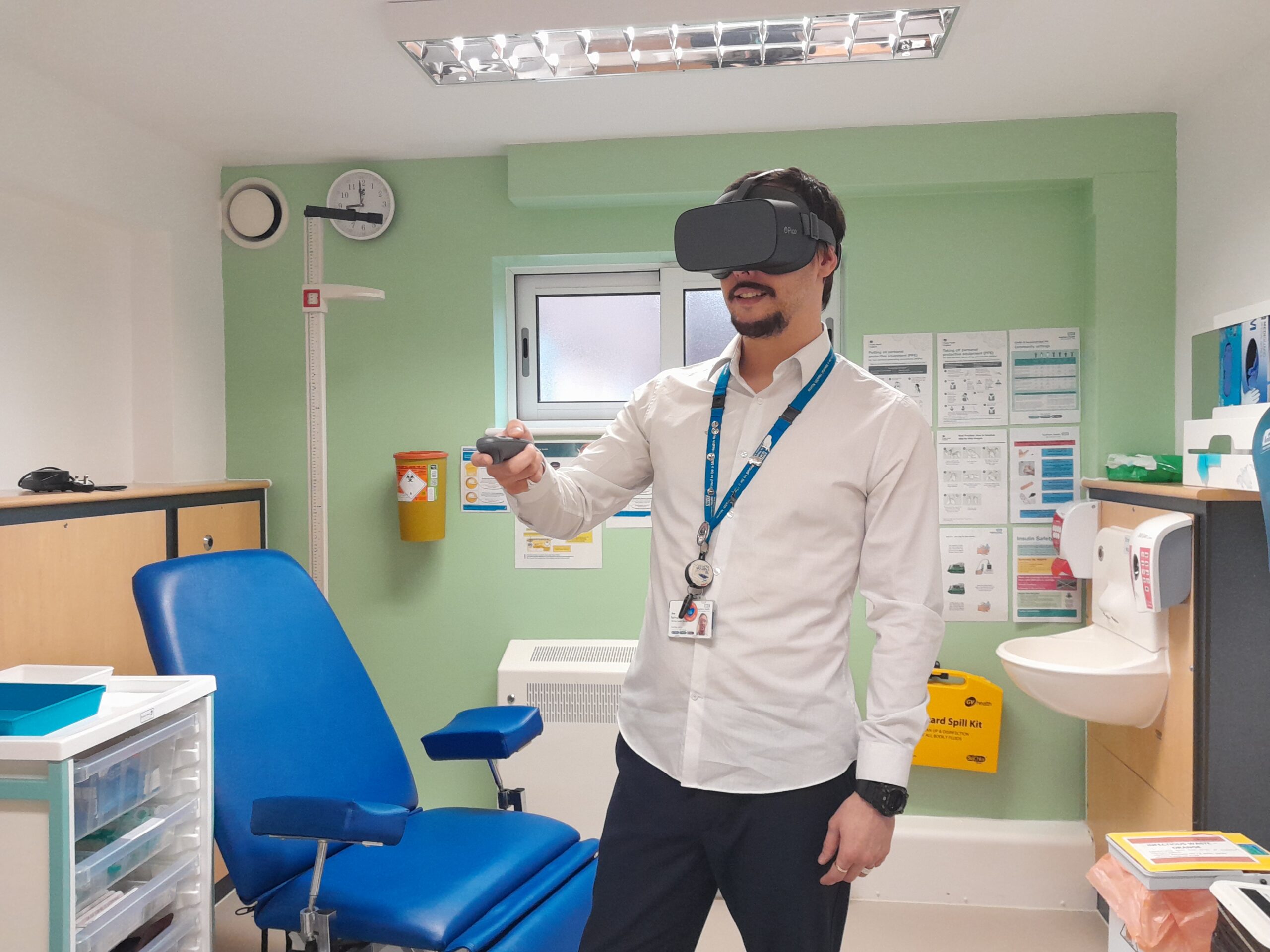latest
Using VR for training staff
Joe Salmon, Lead Research Nurse within Southern Health NHS Foundation Trust, shares his thoughts on the TREE project, one of the HSJ Digital Awards 2023 finalists
Training requirements for staff within the NHS, especially community NHS trusts which cover a vast geographical area, can be a challenge. The idea that staff need to physically leave their base of work and travel to a designated training site is arguably outdated. It takes additional time for staff rather than just the time of said training session, and it has an obvious environmental impact. How do we counter this then? One option is the use of Virtual Reality Technology. Virtual reality (VR) places users into realistic and immersive environments and therefore provides the opportunity for staff to experience several simulated settings, without the need for travel.
Adoption of remote working and telepsychiatry during the pandemic, although a challenge, has also provided the NHS with an opportunity for innovative digital delivery of services and intervention, including staff training (Bestsennyy et al. 2021). User experience data previously gathered on the Virti platform, demonstrates user preference and increased engagement when using the platform over alternatives such as video, audio and online (Young and Aquilina 2021). VR training has been shown to positively impact clinical trainees’ speed of decision-making, both immediately after training and one month following (Young and Aquilina 2021).
Southern Health NHS Foundation Trust is a community mental health trust, based in Hampshire, which has a variety of inpatient wards, ranging from adult acute inpatients to more specialised forensic units. It also has a variety of community teams such as Early Intervention Psychosis teams and Community Mental Health Teams. Within such settings, the use of restricted practices can occur. Restrictive practices refer to acts that restrict a patient’s movement, liberty and/or freedom in order to take immediate control of a dangerous situation and attempt to end or significantly reduce the danger to the patient or others (GOV.UK 2017). However, the use of such practices can cause harm to both patients and staff, and the reduction of such practices could improve both patient and staff experience (Cusack et al. 2018).
Therefore, in collaboration with VIRTI and Southern Health NHS Foundation Trust staff, simulations were created to highlight restrictive practices and to train staff to reduce their use of such practices. These simulations were incorporated in Southern Health NHS Foundation Trust’s novel, feasibility study dubbed “TREE”: Reducing The use of REstrictive practices on psychiatric wards through Virtual REality immersive technology training: A Virtual Reality Feasibility Study.
This was an exploratory, randomised controlled, two-arm, mixed-methods-based real-world clinical trial to assess feasibility. Six wards were randomised into two arms: control and intervention. Those allocated to the intervention arm had access to the following virtual reality training simulations:
- Patient with a weapon
- De-escalation
- Experience of being under observation
- 1-1 supervision.
Results were gathered from baseline and compared at one-month and six-month intervals. We are still in the data analysis stage of this feasibility project but the results appear promising.
There were clear strengths when conducting this trial: the VR simulations were co-produced with NHS staff to make them as applicable to NHS settings as possible; the ability to have training on demand without having to travel and wait for an allocated trainer was well received; basing the simulations in an inpatient, real-world setting enhanced the immersive learning; and initial engagement from clinical staff was very positive.
However, as with such novel studies there were challenges. Due to the type of wards that were randomly allocated to take part in this trial, there were high levels of acuity and reliance on agency staff due to high staff turnover. Therefore, there were incidences of those trained in the use of VR leaving the study earlier as they moved roles. Furthermore, there was noted digital hesitancy in some staff members who preferred the option of having face-to-face training.
Nonetheless, the project had clear short-term impacts. Within our local area, we have begun promoting the use of VR and have built a network of interest. More importantly, however was the apparent initial reduction in restrictive practices. From a longer-term perspective, this study has allowed staff to become more engaged in clinical research. Local universities have also expressed interest in adopting these simulations within the nursing programmes.
It will be interesting to replicate this study in other settings within the NHS, especially now we are no longer restricted by the COVID-19 pandemic. It would also be beneficial to monitor the use of restrictive practices over a longer time period to have a longer comparison period.
The TREE project had paved the way for future opportunities within Southern Health, and the wider research community, in relation to VR. Southern Health has now set up its own VR Lab where staff’s VR ideas can be explored and potentially investigated. It is an exciting time to be looking into how VR can help shape patient’s experience and recovery.
References
Bestsennyy O, Gilbert, G., Harris, A., Rost, J. Telehealth: A quarter-trillion-dollar post-COVID-19 reality? : McKinsey & Company; 2021
Cusack P, Cusack, F.P., McAndrew, S., McKeown, M., Duxbury, J. . An integrative review exploring the physical and psychological harm inherent in using restraint in mental health inpatient settings. International Journal of Mental Health Nursing. 2018;27(8):1162-76.
GOV.UK. Code of practice: Mental Health Act 1983. In: Health P, editor. gov.uk: The Stationery Office, Norwich; 2017.
Young A, Aquilina, A. Use of Virtual Reality to Support Rapid Upskilling of Healthcare Professionals during COVID-19 Pandemic. XR Case Studies. 2021:137-45.

